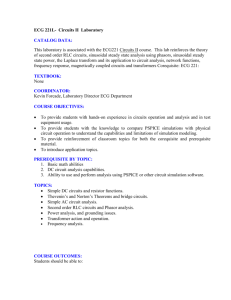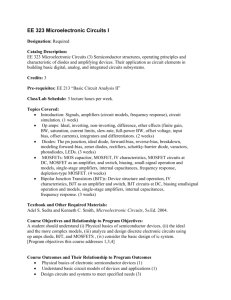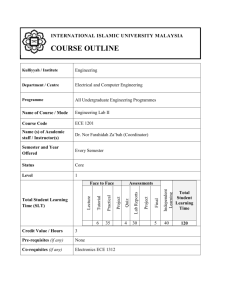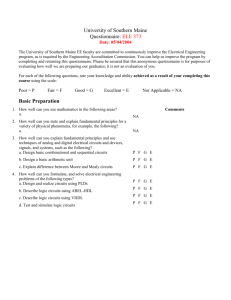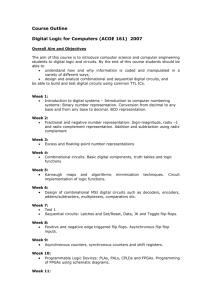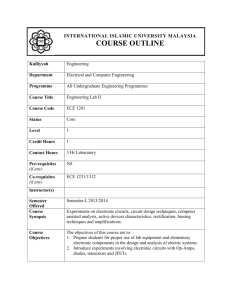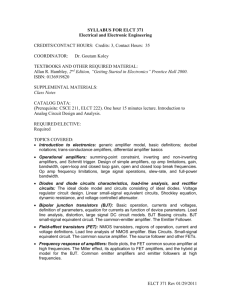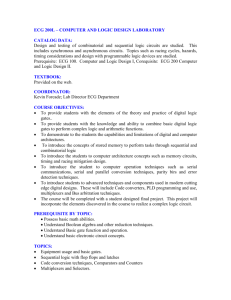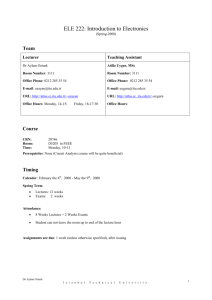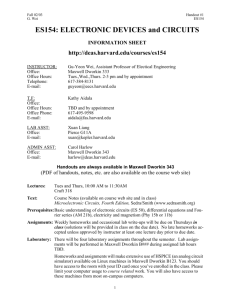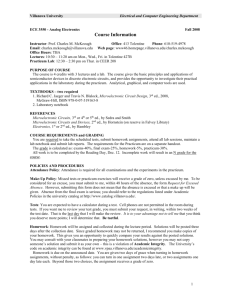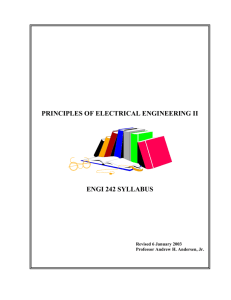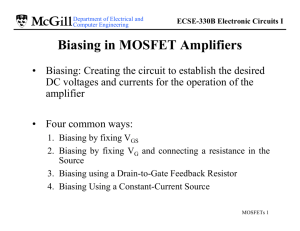EEG 208: Circuits I
advertisement
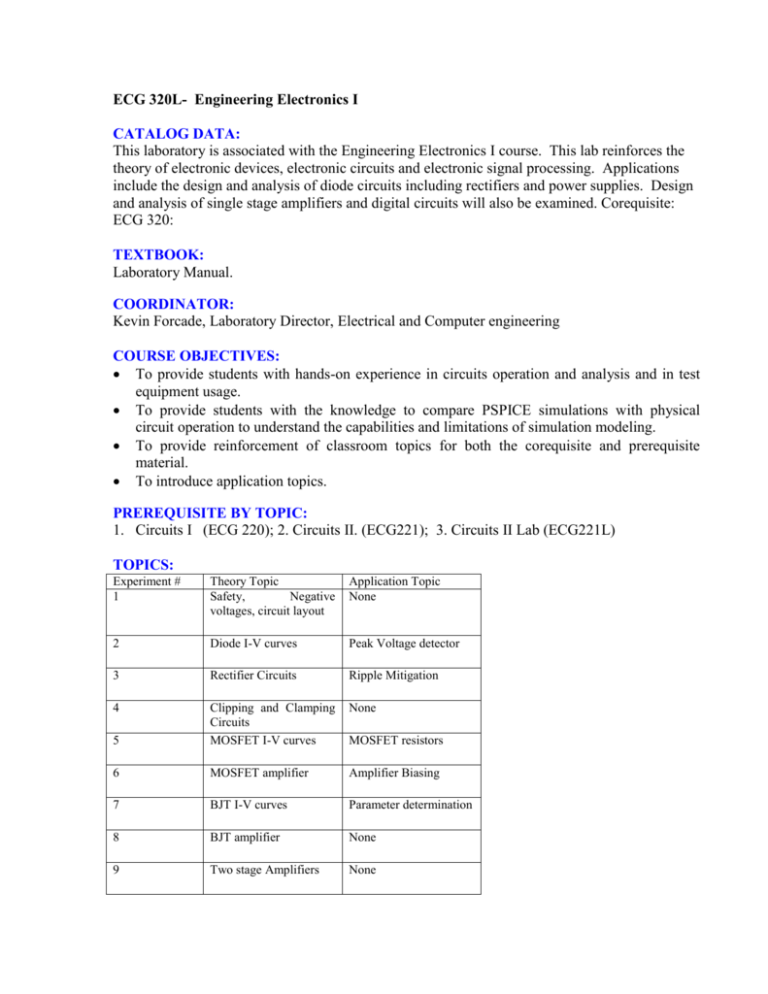
ECG 320L- Engineering Electronics I CATALOG DATA: This laboratory is associated with the Engineering Electronics I course. This lab reinforces the theory of electronic devices, electronic circuits and electronic signal processing. Applications include the design and analysis of diode circuits including rectifiers and power supplies. Design and analysis of single stage amplifiers and digital circuits will also be examined. Corequisite: ECG 320: TEXTBOOK: Laboratory Manual. COORDINATOR: Kevin Forcade, Laboratory Director, Electrical and Computer engineering COURSE OBJECTIVES: To provide students with hands-on experience in circuits operation and analysis and in test equipment usage. To provide students with the knowledge to compare PSPICE simulations with physical circuit operation to understand the capabilities and limitations of simulation modeling. To provide reinforcement of classroom topics for both the corequisite and prerequisite material. To introduce application topics. PREREQUISITE BY TOPIC: 1. Circuits I (ECG 220); 2. Circuits II. (ECG221); 3. Circuits II Lab (ECG221L) TOPICS: Experiment # 1 Theory Topic Safety, Negative voltages, circuit layout Application Topic None 2 Diode I-V curves Peak Voltage detector 3 Rectifier Circuits Ripple Mitigation 4 None 5 Clipping and Clamping Circuits MOSFET I-V curves 6 MOSFET amplifier Amplifier Biasing 7 BJT I-V curves Parameter determination 8 BJT amplifier None 9 Two stage Amplifiers None MOSFET resistors 10 Special topics None 11 Student design project Filters COURSE OUTCOMES: Students should be able to: 1. Properly use the electronic test equipment found in a common laboratory setting. This includes function generators, multimeters, and oscilloscopes. 2. Perform PSPICE analysis and compare simulation results with test measurements on physical circuits. 3. Determine the effect of frequency on the use of the test equipment and on reactive components. 4. Use the topics presented along with the applications provided to solve real world problems. COMPUTER USAGE: Student will use PSPICE or a similar variant. DESIGN CONTENT: 20% Design. Students will provide some input as to the exact parameters and testing techniques in several of the labs. A student design projectwill be required of all students CLASS SCHEDULE: Laboratory 3 hours per week PROFESSIONAL CONTRIBUTION: None. RELATIONSHIP BETWEEN COURSE AND PROGRAM OUTCOMES: These course outcomes fulfill the following program objectives: a. Knowledge of scientific principles that are fundamental to the following application areas: Circuits, Communications, Computers, Controls, Digital Signal Processing, Electronics, Electromagnetics, Power and Solid State. b. An ability to design and conduct experiments, analyze and interpret data, design a system, digital component, or process using the techniques, skills, and modern engineering tools, incorporating the use of design standards and realistic constraints that include most of the following considerations: economic, environmental, sustainability, manufacturability, ethical, health and safety, social and political. d. An ability to identify, formulate and solve engineering problems e. An ability to communicate effectively and possess knowledge of contemporary issues and a commitment to continue developing knowledge and skills after graduation COURSE PREPARER AND DATE OF PREPARATION: Kevin Forcade, 6 January, 2003 (version 1)

